Explore the Vibrant World of Pop Art: History, Characteristics, and Influence
Pop Art emerges from the vibrant world of popular culture and modern consumerism, capturing the essence of our times and gaining momentum unlike anything seen before. This genre showcases the symbols of media, advertising, comics, and influential figures as its focal points. This movement emerged prominently in the mid-20th century, particularly in Britain and the United States, taking shape during the vibrant years of the 1950s and 1960s. It pushes the limits of traditional arts, frequently perceived as excessively rigid and exclusive, targeting only specific demographics.
This art movement has an advantage that sets it apart from other arts, namely the ability to produce Pop Art works en masse with attractive and strong visuals. This genre successfully bridged the gap between art and the general public, so art is no longer considered something exclusive only for certain circles. In addition, the use of bright colors, simple shapes, and a communicative visual style makes the Pop Art movement easy to understand while capturing attention. Another advantage is its ability to reflect trending cultures, as well as the freedom of expression for artists in conveying criticism of modern consumerism.
Pop Art is not just a style. Rather, it is a phenomenon that is worth learning, from its history to its impact on society. This article will thoroughly explain Pop Art, starting from its meaning and history of emergence to its distinctive characteristics. This article will also highlight its impact on the design field and its relevance for modern civilization. Through this explanation, readers are hopefully able to gain a more profound understanding about the role of Pop Art as one of the most influential art genres.
Table of Contents
Pop Art History: From Britain to America
The history of this genre is not a short journey. The movement evolved over a long journey, beginning in Britain and culminating in its prominence in the United States. British artists began exploring popular culture as a source of art inspiration, which gave rise to the conceptual roots of this movement. The following explanation will provide you with a deeper understanding of how Pop Art became a symbol of pop culture.
The Starting Point in Britain
Pop Art emerged for the first time in Britain in the middle of the 1950s. This movement appeared as a response to the consumerism culture that started to develop after WWII and as a reaction to modern art. This style started when there were discussions among young artists of the Independent Group, a community for artists, critics, and architects from the Institute of Contemporary Arts (ICA) in London.
Pop Art in the United States
Even though it started in Britain, Pop Art gained its global popularity in the United States in the early 1960s, especially in New York, the center of modern art at that time. In Britain, this style is more intellectual and critical, but in the United States, this genre of art is more about glamour, expressiveness, and closeness with the commercial culture. American artists elevated a broader range of popular culture icons, from Hollywood celebrities and comic strips to mass consumer products. This approach positioned Pop Art works as commodities while blurring the distinction between high art and popular culture.
The Characteristics of Pop Art Styles
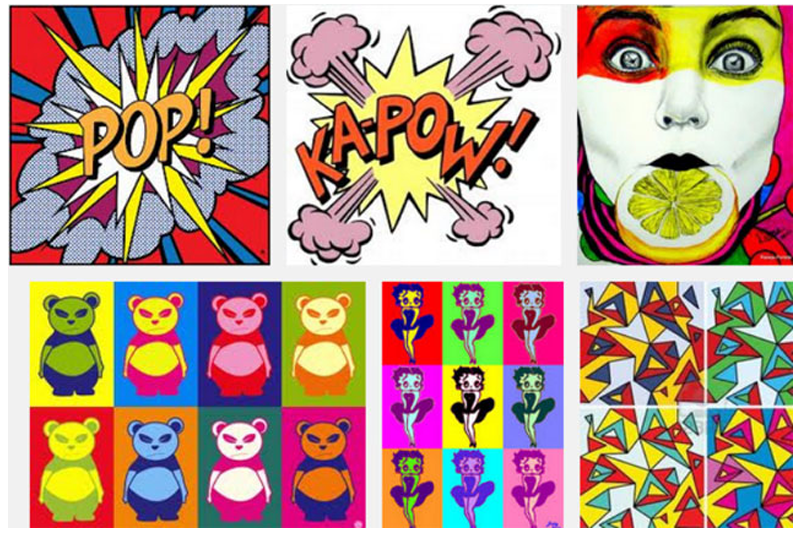 Every art movement boasts unique characteristics that define its visual identity, and Pop Art is no exception. To find out more about this style, it’s essential to pinpoint the key characteristic of Pop Art that defines its unique essence. Here are some unique features that define Pop Art:
Every art movement boasts unique characteristics that define its visual identity, and Pop Art is no exception. To find out more about this style, it’s essential to pinpoint the key characteristic of Pop Art that defines its unique essence. Here are some unique features that define Pop Art:
High Contrast
The first trait of Pop Art that is easily recognizable is its daring use of bright primary colors, making it full of visual plays. The use of contrast creates a strong visual impression, making an artwork easy to attract attention as well as delivering a message effectively and directly.
Bold and Capitalized Typography
Pop Art often utilizes large-sized typography to emphasize its visual message. Additionally, the use of capital letters can give a bold, straightforward impression that is similar to poster styles or commercial ads, making it easily readable. If you are interested in looking for fonts with strong characters for your Pop Art design, you can visit Yumnatype and find many wonderful fonts with their distinctive characteristics.
Inspired by Popular Culture
Pop Art takes inspiration from objects or visuals from people’s daily lives. Popular objects like advertisements, comics, celebrities, and consumer products become the main elements of the artwork, making it feel closer to civilians.
Flat Style
The flat style stands out through the flat visuals that are its main characteristic. Objects are depicted with simple shapes without complicated three-dimensional effects, making the work appear modern, clean, and easy to understand. The visual illustration features bold, solid characters, supported by striking colors.
Repetition
Object repetition is a technique that this art movement often utilizes in its style. This technique mirrors the mass production process of consumer culture, highlighting specific images that leave a lasting impression on the audience’s memory.
Famous Pop Art Figures and Their Works
The development of Pop Art is inseparable from the role of outstanding artists who succeeded in elevating popular culture into high-value works of art. They used a variety of styles and approaches to create iconic works that continue to stand as symbols of this style’s glory today.
Andy Warhol
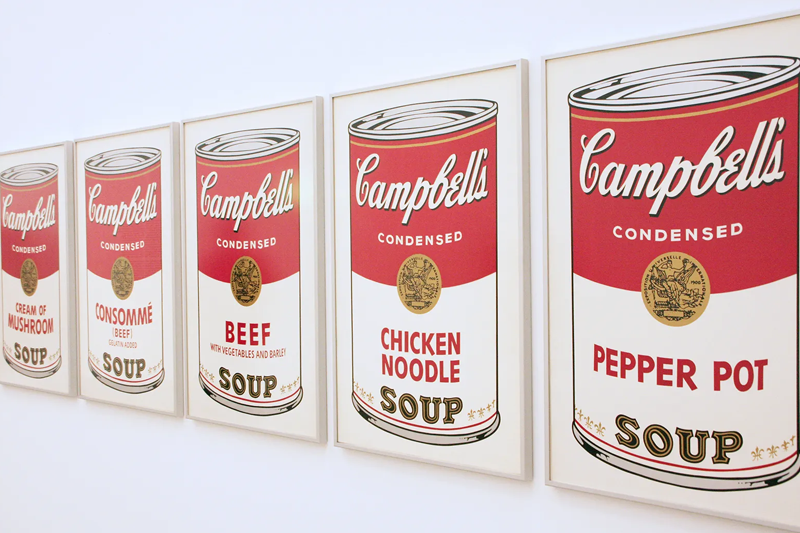 Andy Warhol is the greatest icon in the history of Pop Art. He is known for his silkscreen printing technique that presents repetitive images with contrasting colors. His famous works, such as Campbell’s Soup Cans (1962) and Marilyn Diptych (1962), highlight consumer culture and celebrity fame. Warhol succeeded in transforming everyday objects and popular figures into symbols of modern art.
Andy Warhol is the greatest icon in the history of Pop Art. He is known for his silkscreen printing technique that presents repetitive images with contrasting colors. His famous works, such as Campbell’s Soup Cans (1962) and Marilyn Diptych (1962), highlight consumer culture and celebrity fame. Warhol succeeded in transforming everyday objects and popular figures into symbols of modern art.
Roy Lichtenstein
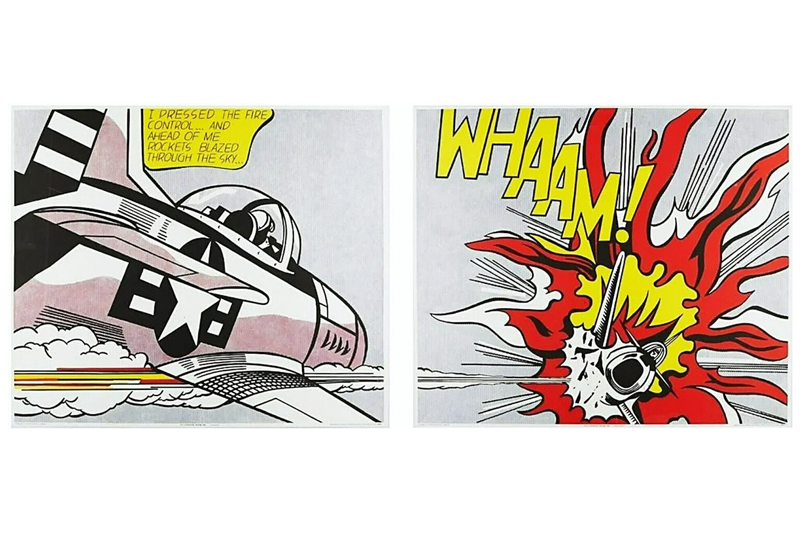
Roy Lichtenstein presented Pop Art with a different approach, as he adapted it in a comic strip style. Lichtenstein’s style is characterized by the use of Ben-Day dots, thick lines, and bright colors that resemble comic book prints. prints. His two iconic works, Whaam! (1963) and Drowning Girl (1963), feature dramatic expressions while uniting fine art with popular visual language.
Richard Hamilton
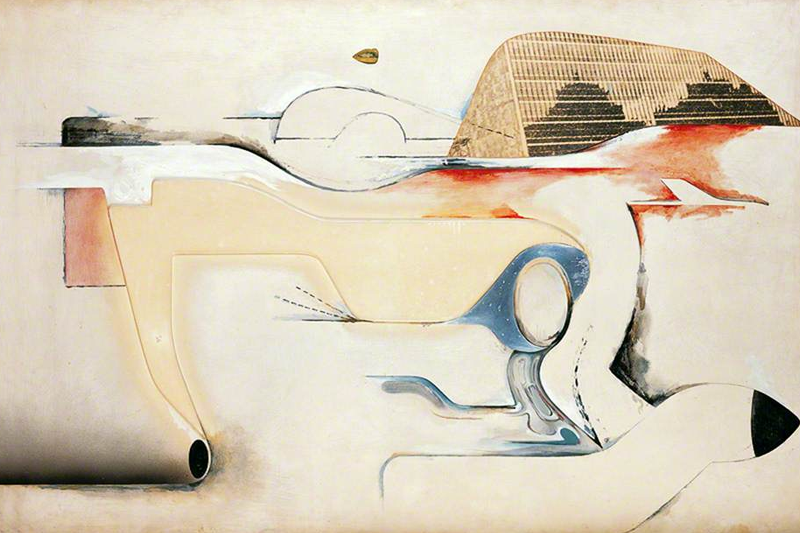 Richard Hamilton, a British artist, is regarded as the founder of Pop Art in Europe. His work “Hers is a lush situation” (1958) was one of the pieces that encouraged the development of this style. Hamilton used a collage of advertising, magazine pictures, and other pop culture components to criticize the postwar modern lifestyle.
Richard Hamilton, a British artist, is regarded as the founder of Pop Art in Europe. His work “Hers is a lush situation” (1958) was one of the pieces that encouraged the development of this style. Hamilton used a collage of advertising, magazine pictures, and other pop culture components to criticize the postwar modern lifestyle.
Keith Haring
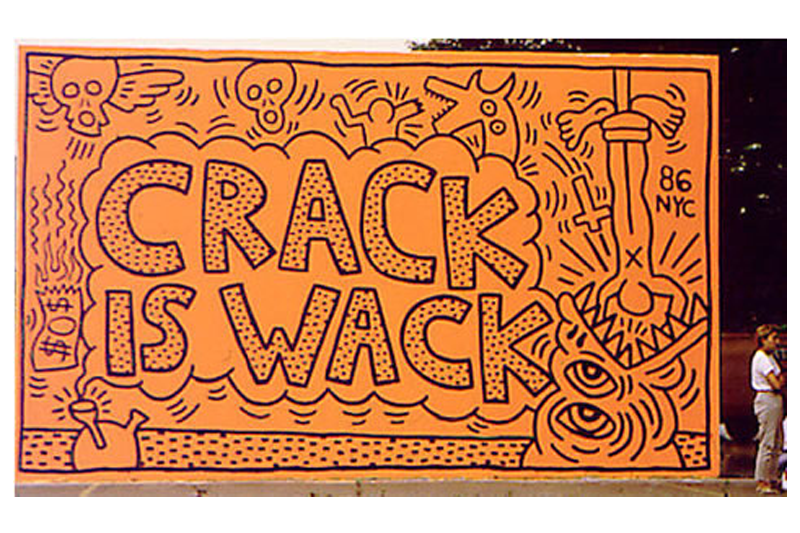 Keith Haring brought Pop Art up to the public with its distinctive style of bold lines, simple figures, and striking colors. He had many mural works in public spaces with strong social messages. One of his famous artworks is the Crack is Wack (1986) mural. Through that art, he denounced the danger of drugs and used it as a symbol of social fight.
Keith Haring brought Pop Art up to the public with its distinctive style of bold lines, simple figures, and striking colors. He had many mural works in public spaces with strong social messages. One of his famous artworks is the Crack is Wack (1986) mural. Through that art, he denounced the danger of drugs and used it as a symbol of social fight.
The Implementation of Pop Art in the Modern Life
Pop Art’s traces are now easily discernible in everyday life. Starting with eye-catching product packaging, expressive fashion, street murals, and digital art, all of these reflect the relevance of this style in the modern era. The presence of this style demonstrates how art not only serves as an aesthetic expression but also becomes an effective means of visual communication. Through its application, this art style is able to attract attention, convey messages in a simple yet powerful way, and strengthen both cultural and commercial identities. Here are some detailed explanations:
Product Packaging Design
Product packaging design becomes one of the realest implementations of Pop Art. Often, designers use bright colors, bold typography, and simple illustrations to capture consumers’ attention and establish a memorable visual identity.
Fashion
In the fashion world, this style presents itself through clothes, accessories, and shoes with repetitive patterns, iconic pictures, or large typography that reflects pop culture. This design not only strengthens the character but also provides an expressive and daring impression.
Street Mural and Digital Art
Street murals and digital arts expanded the reach of the Pop Art genre to the public and social media. Artists leverage the town walls and digital media to deliver their social, cultural, and even commercial messages with distinctive and communicative style, resulting in viral and relatable artwork.
Advertising and Graphic Design
Pop Art in modern life is often applicable in the advertising field and graphic design. In the world of advertisement, this style creates a visual that looks striking, contrasting, and memorable. It is often made in the shape of comic illustrations, large typography, and striking colors that appeal to the audience. Graphic design, on the other hand, is often applied in product packaging, social media, promotional banners, and more to showcase their brand identity. It is also used to present an expressive, modern, and closer approach to pop culture.
What Makes the Pop Art Movement Unique?
Pop Art becomes unique because the artists adopt everyday objects as works of art. If art is generally considered complex and only enjoyable for certain circles, this art presents images from advertisements, comics, food products, and even celebrities. This style’s artists use bright colors, simple shapes, and familiar objects, making their works easily understood by many people. This uniqueness distinguishes it from other art styles, as it combines popular culture with art, making it feel close to everyday life.
Ready to Make Your Own Pop Art Design?
Pop Art is not just an art movement; it is a movement that changed the way society views art. Pop Art artists utilize popular culture as a source of inspiration to present works that are simple, powerful, and easy to understand. Since its emergence and its application in modern life, this art continues to demonstrate its relevance and has a significant influence in the world of art and design. With its uniqueness and appeal, this art movement opens up space for anyone to create without limits. So, are you ready to create your own version of a Pop Art design?
Share on:
Free Resources
Recent Post
- Explore the Vibrant World of Pop Art: History, Characteristics, and Influence
- 5 Design Sprint Phases: The Best Method to Quickly Test Your Ideas
- Top 7 Graphic Design Job Recommendations & How to Land Them Like a Pro
- Playful Logo Design: Real Case Studies from 6 Iconic and Beloved Global Brands
- Brandmark Logo: Symbols as the Powerful Tool for Branding




